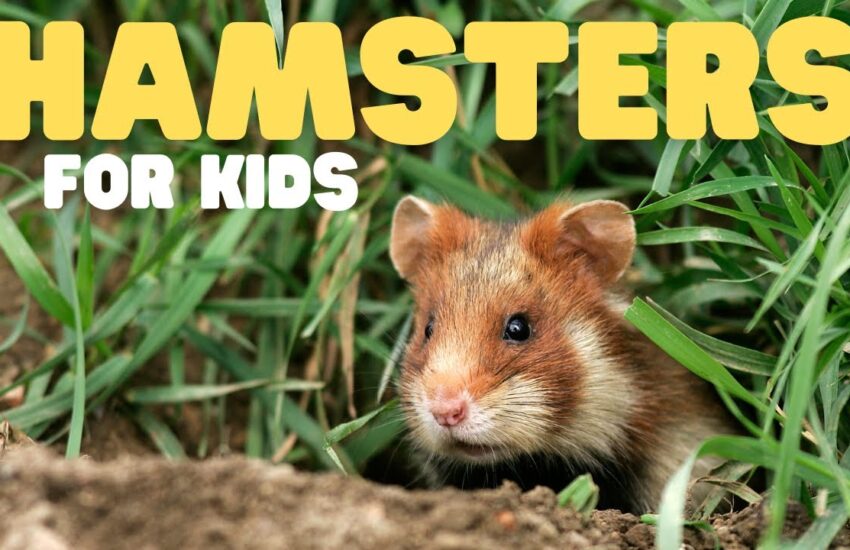Best Hamsters for Learning Fun
Hamsters are more than just cute pets; they are incredible little creatures that offer opportunities for creativity and learning. Did you know that interacting with hamsters can enhance children’s cognitive skills and emotional intelligence? These small rodents can teach kids responsibility, empathy, and problem-solving. This article explores the best hamster breeds for educational purposes and how they can make learning fun!

In the following sections, we’ll delve into the various hamster breeds that are not only adorable but also perfect for teaching children essential life skills. We will cover their unique characteristics, care requirements, and fun activities that can engage your child’s mind. We’ll also highlight the importance of considering your child’s needs and expectations when choosing a hamster.
Understanding Hamsters: A Quick Overview
Before diving into which hamsters are best for learning activities, it’s essential to understand these charming creatures. Hamsters belong to the rodent family and are nocturnal animals, meaning they are most active at night. With various breeds offering different temperaments and sizes, it’s crucial to choose one that fits your child’s lifestyle.
Popular Hamster Breeds
- Syrian Hamster: The most popular breed, known for its friendly nature.
- Dwarf Campbell’s Hamster: A smaller breed that is social and curious.
- Roborovski Hamster: Very active and fast; perfect for children with a lot of energy.
- Dwarf Winter White Hamster: Calm and easy to handle, making them great for learning experiences.
Choosing the Right Hamster for Learning
When selecting a hamster, consider factors such as the child’s age, maturity, and level of responsibility. Young children may benefit from a breed known for its handling ease, while older kids may appreciate a more active hamster capable of engaging in fun activities.
Key Factors to Consider
- Temperament: Choose a breed that enjoys human interaction.
- Size: Smaller breeds may be easier for young hands to manage.
- Care Requirements: Ensure that the child can handle feeding, cleaning, and playing with the hamster.
Fun Learning Activities with Hamsters
Once you’ve selected the right hamster, numerous fun activities can enhance the learning experience.
Building a Hamster Habitat
Engage your child in building a comfortable and stimulating habitat for your hamster. This activity will teach them about habitat requirements, the value of creating a safe environment, and the importance of cleanliness.
Steps to Create a Hamster Habitat
- Choose a spacious cage with proper ventilation.
- Line the bottom with bedding material to absorb moisture.
- Add tunnels, toys, and a hiding place.
- Ensure fresh water and food are easily accessible.
Teaching Responsibility Through Care
Caring for a hamster can instill a sense of responsibility. Children can take turns feeding, cleaning the cage, and observing their hamster’s behavior. Uncovering daily habits can be both fun and educational.
Daily Care Routine
- Feeding: Discuss proper nutrition and the types of food hamsters enjoy.
- Cleaning: Teach the child the importance of hygiene in pet care.
- Exercise: Introduce how to encourage playtime with toys and tunnels.
Hamsters and Emotional Development
Having a pet, especially a hamster, can significantly impact a child’s emotional development. Engaging with animals fosters empathy, patience, and social skills.
Encouraging Empathy and Understanding
Teaching children to observe and respect their hamster’s needs can improve emotional intelligence. Highlight the signs that your hamster is happy or stressed, ensuring that kids learn to identify and respond to their pet’s feelings.
Signs of a Happy Hamster
- Active and playful behavior
- Exploring their habitat
- Curiosity towards human interaction
Sharing Knowledge and Resources
Encourage children to research hamster care and behavior, presenting what they’ve learned to family or friends. This teaches presentation skills and reinforces learning.
Conclusion: Enhancing Learning Through Hamsters
In summary, hamsters can be delightful teaching tools for children. By choosing the right breed and engaging in various fun activities, you can foster essential life skills and emotional development. Whether through building a habitat, sharing the responsibility of care, or nurturing empathy, these small creatures can have a significant impact on your child’s learning journey.
For further reading on pet care and learning, check out these informative articles on related topics: How Pets Influence Child Development and The Importance of Responsibility in Pet Ownership.
